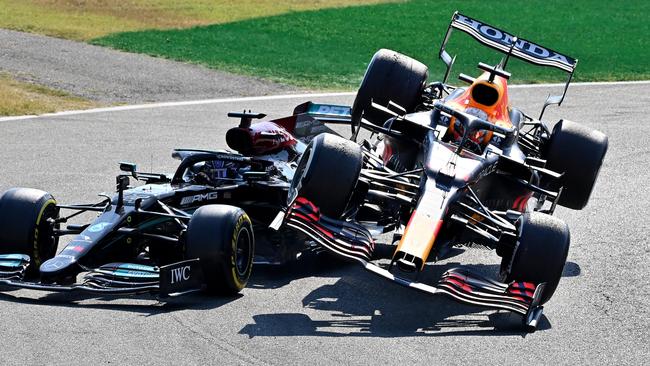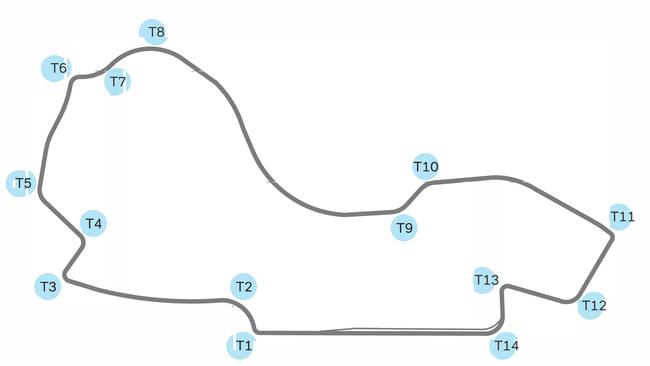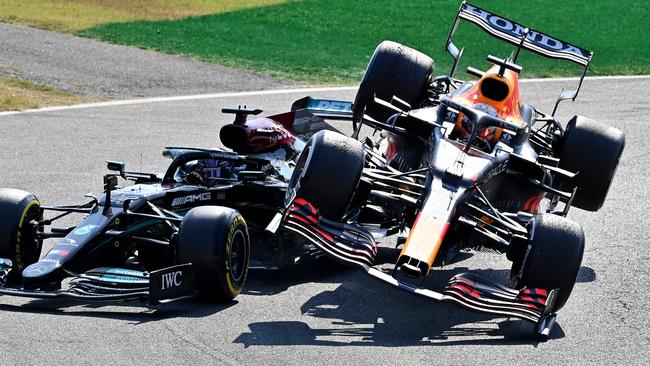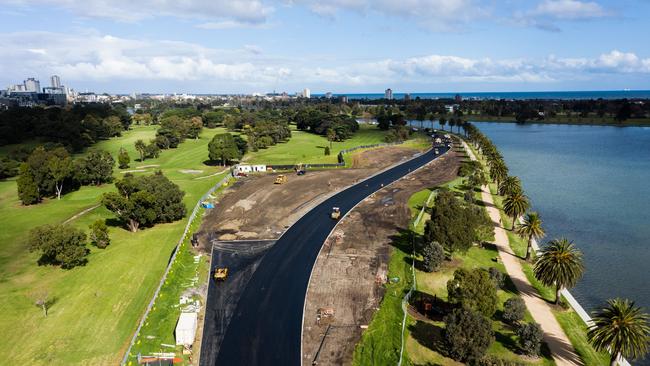F1 Australian Grand Prix 2022: Why upgrades and resurfacing will make this the greatest race ever
The Australian Grand Prix will be the best race in years thanks to two years of track upgrades ahead of the F1 this weekend. Check out what’s changed.

F1
Don't miss out on the headlines from F1. Followed categories will be added to My News.
Lap times could be up to five seconds faster, overtaking opportunities improved and aggressive driving rewarded when Formula One’s new machines hit the upgraded Albert Park track for the Australian Grand Prix.
After the completion of $20m in modifications to the lakeside circuit over the past two years, Australian Grand Prix officials expect the major track changes to deliver faster speeds, more passing, enhanced strategy and better racing.
In conjunction with the new specification F1 cars, the track changes are tipped to produce the “most spectacular racing we have seen for decades” at the event.
Completed in three phases, the upgrades included the widening of pit lane, significant changes to the track lay-out and camber and resurfacing of the entire circuit.
The track modifications have reduced the number of turns at the track from 16 to 14 but will allow for a fourth DRS zone for the circuit.
Australian Grand Prix Corporation chief executive Andrew Westacott said the modifications were made in conjunction with F1 and the FIA and promised to enhance the racing.
“Lap times will be four to five seconds quicker than they were in the old spec cars with the old track configuration,” Westacott said.
“You want to reward aggressive driving and penalise poor driving and we think that the changes we have made are going to achieve this.
Watch Every Practice, Qualifying & Race of the 2022 FIA Formula One World Championship™ Live on Kayo. New to Kayo? Try 14-Days Free Now >

“We are going to see how this all pans out at the event but we think that we have done everything well. We are really pleased with the quality of the circuit and we think that it is going to produce greater opportunities for overtaking and more exciting racing, especially with the new spec cars.
“The changes are going to mean that it is a new circuit. No one has an advantage because no one has ever driven this surface before and this configuration before. That promises to throw up lots of engineering and technical investigative work during practice one, practice two and practice three in the lead-up to qualifying on Saturday afternoon.
“I think it is going to be the most spectacular racing we have seen for decades.”
As the F1 cars prepare to hit the track for the first time in three years after the 2020 and 2021 races were cancelled due to the Covid pandemic, Australian star Daniel Ricciardo said the track changes would add more “excitement” to the return of his home race.
One of the most significant changes to the track is the removal of the chicane at the old turns nine and 10 to produce a virtually straight section along Lakeside Drive, providing enhanced speeds but also an extra DRS zone for the circuit, which will be verified ahead of the event.
The widening of the corner apex at turn six by seven and a half metres is the other major change to the track and will boost the minimum speed through the corner from 149kmh up to 219km/h – an increase of 70km/h.
It is the “most massive speed increase” in any section of the circuit.

The approach to the new turn 11 – the old turn 13 – has also been widened and straightened where it is hoped overtaking opportunities will be maximised.
“We would expect this to be a monumental overtaking opportunity,” Westacott said.
“If the simulator works and the FIA modelling and Formula One modelling come to fruition, we’d see the new turn 11 being an unbelievable overtaking opportunity.”
The Albert Park circuit has come under fire in the past for its lack of overtaking opportunities.
But Ricciardo hoped the track changes would deliver better passing.
“It’s an extra little bit of excitement going home because as good as the track was, it was sometimes a bit too one-line and a bit tricky for passing,” Ricciardo said.
“I think going there now with something different is not only a new challenge for us drivers, but I think it is really going to open up the race and make overtaking something real and that’s what we want is for Sundays to be fun.
“There are a lot of elements that are going to make us pretty keen to get back to Melbourne.”
The circuit will also be widened at the existing turns one, turn three and turn 15, while there will also be camber changes to the current turns three, 13 and 15.

Sky Sports F1 expert David Croft said the track changes would deliver a new experience for drivers.
“FP1 is going to be a completely new experience for drivers who are very experienced around Albert Park,” Croft said.
“There are more overtaking opportunities. The cars can follow closely, they’re going to have to work out where the best place is to pass so they don’t get repassed very swiftly afterwards
“There will be a lot of kind of feeling your way around in the practice sessions and trying to find something different.
“I like the track changes, I said for years that Albert Park is a great place to come and have a racing festival but someone needs to do something about the track
“If the cars are too wide for the old track, well, make the track wider.”
MORE MOTORSPORT
The ‘spectacularly bad’ which started Ricciardo spiral
F1 champ Hamilton ‘struggling mentally’
Daniel Ricciardo: ‘I was going to retire’
Former F1 driver turned commentator Martin Brundle said he was a fan of the old Albert Park lay-out but supported any move to improve the racing.
“I quite liked the old Albert Park if I’m honest,” Brundle said.
“I know there is a lot of thought and a lot of data and careful analysis gone into it. Where we have made other circuits faster, it worked really well and freed the cars up a little bit.
“I’ll wait and see but I am confident in the knowledge it has been very carefully thought through, the changes. I quite like the (old) nine and 10 chicane for example so it’s going to need to thrill me somewhere else.
“All in all if it frees the track up a little bit and lets the cars flow and we see a bit more wheel to wheel action then it will be a good result.”



